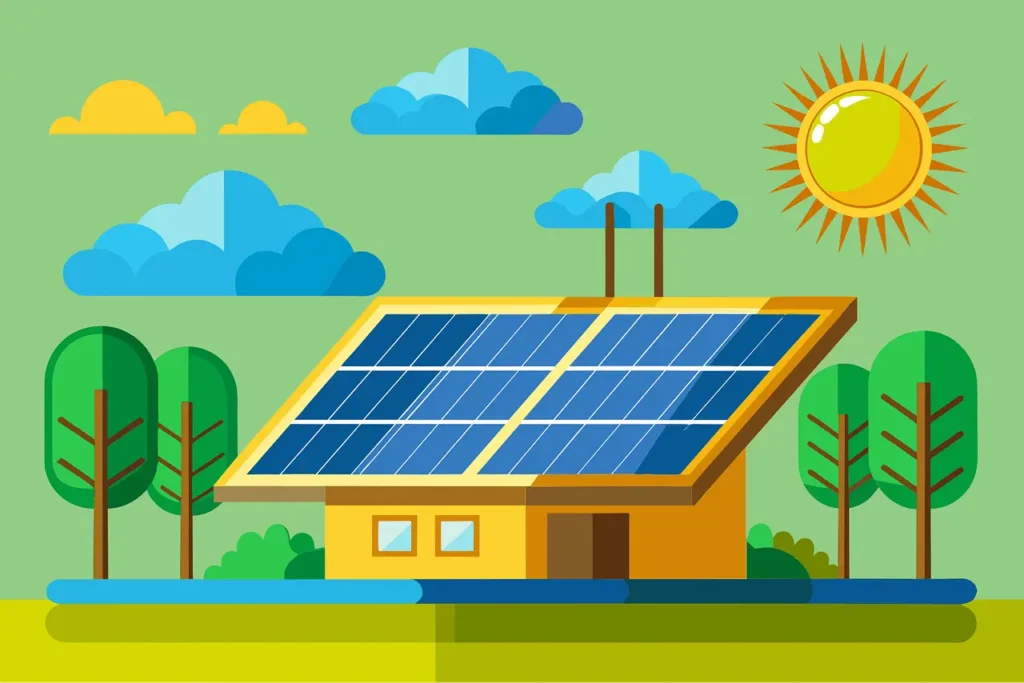
The so-called “green energy revolution” is sold as humanity’s ticket to a cleaner, brighter future—a utopia where wind turbines hum harmoniously, solar panels gleam under endless sunshine, and electric vehicles glide silently, saving the planet from the clutches of fossil fuels. It’s a hoax, a fraud, a scam—actually, nothing better than Mungerilal ke Haseen Sapne.
In the following, I will rip through the eco-friendly buzzwords and glossy PR campaigns of the self-styled environmentalists. The “green energy scam” isn’t about financial fraud; it’s about a dangerously overhyped narrative that masks inconvenient truths.
In a country like India, where energy demands are colossal and growing, the idea that windmills and solar farms can power the nation’s future is not just wishful thinking—it’s a goddamn delusion. Let’s blast this myth with hard facts, expose the dirty secrets of renewables, and lay bare India’s energy landscape to show why “green” energy is a sideshow, not a saviour.
Carbon Footprint

The champions of green energy love to flaunt wind turbines and solar panels as symbols of peace and progress, but they conveniently ignore the environmental wreckage left in their wake. The production, deployment, and disposal of renewable energy systems come with massive environmental and economic costs that make the “green” label a cruel misnomer.
Building a single 3 MW wind turbine generates around 1,500 tons of CO2 equivalents, thanks to the energy intensive processes of smelting steel, pouring concrete, and crafting composite blades from fiberglass, epoxy, and carbon fiber. That’s right—before a turbine even spins, it’s already left a carbon footprint the size of a small coal plant’s annual output.
Solar panels aren’t any cleaner. Purifying silicon for photovoltaic cells emits 50–150 kg of CO2 per square meter, and that’s assuming you’re not factoring in the coal-heavy grids in places like China, where most panels are made.
Electric vehicle (EV) batteries? A single one can churn out 7–13 tons of CO2 during production, depending on the battery’s size and where it’s made. In India, where coal powers much of the grid, the break-even point for these “green” technologies can take years—if it’s ever reached at all.
The Mining Nightmare
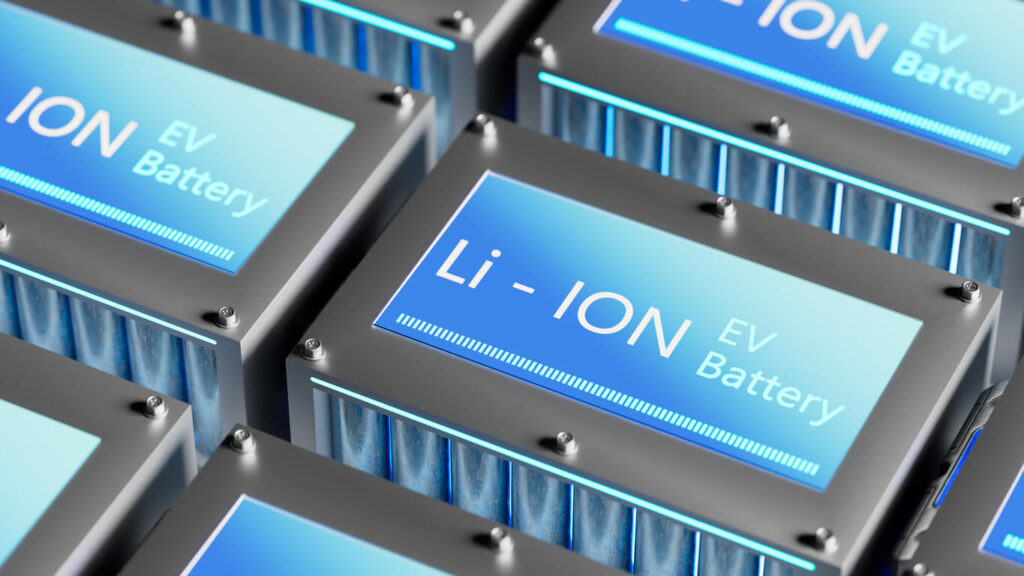
Then there’s the mining nightmare. Lithium for EV batteries comes from places like China, Myanmar and South America’s Lithium Triangle. At several places, groundwater depletion is wrecking ecosystems and livelihoods. Cobalt, mostly sourced from the Democratic Republic of Congo, involves child labour and toxic sludge that poisons rivers. Rare earth metals like neodymium, critical for wind turbine magnets, create radioactive waste in China’s mining hubs.
Where is the Land?
And don’t forget the land grab. Solar farms and wind installations gobble up vast tracts, disrupting desert ecosystems in the U.S. or threatening marine life with offshore turbines. In India, where land is already a battleground for agriculture and urbanization, carving out space for these projects is a recipe for conflict as well as corruption. These aren’t abstract issues—they’re real-world devastations, cloaked in the feel-good rhetoric of sustainability.
Problem of Disposal
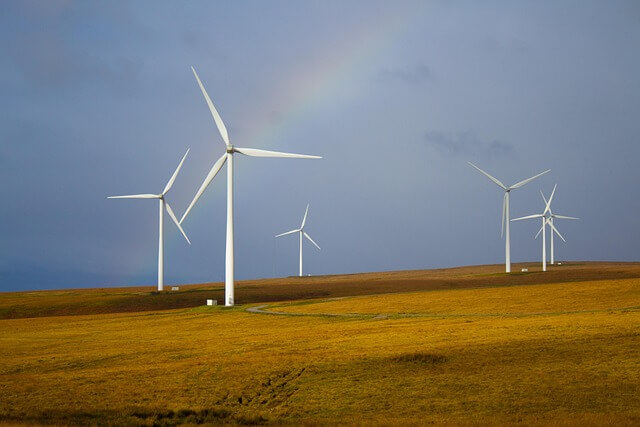
Disposal is the final nail in the coffin. Wind turbine blades, built to last 20–25 years, are piling up in landfills because their composite materials are nearly impossible to degrade or recycle. By 2050, the world could be drowning in 43 million tons of blade waste. Solar panels, laden with lead and cadmium, face similar recycling bottlenecks. EV batteries? Sure, they’re recyclable in theory, but the process is so energy-intensive and costly that most end up in dumps, leaking toxins into soil and water. This isn’t green—it’s a toxic legacy we’re passing on to the next generation.
Analysis of our Power Production
To understand why green energy is a pipe dream for a country like India, let’s dive into the hard data of its energy sector. India is the world’s third largest consumer of electricity, with a total installed capacity of 467.885 GW as of March 31, 2025. The demand is skyrocketing—projected to hit 817 GW by 2030, according to the Central Electricity Authority (CEA).
Remember, India isn’t Denmark, with its tiny population and modest energy needs. India’s 1.46 billion people, booming industries, and rapid urbanization require an energy backbone that doesn’t flicker when the wind dies down or clouds roll in.
India’s Total Installed Capacity: 484.82 GW
Thermal Power (Coal, Lignite, Gas, and Diesel): Contributes 51.3% (248.65 GW)
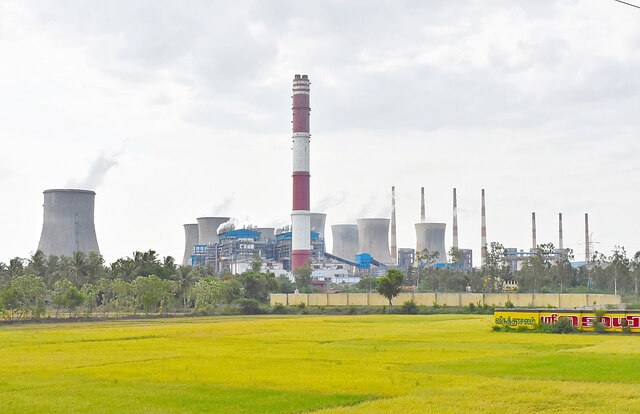
There are approximately 200 operational coal-based thermal power plants produce 71% of this; around 50 major grid-connected gas-based plants produce 10.04%; and 10 major grid-connected diesel plants. There are numerous smaller captive diesel generator sets that do not contribute to the grid.
Thermal power, particularly coal, accounts for ~71% of electricity generation due to higher utilization rates compared to renewables, despite a lower share of installed capacity. India’s coal plants are the backbone of its grid, providing reliable base-load power despite high emissions (713 g CO2/kWh vs. global average of 480 g CO2/kWh).
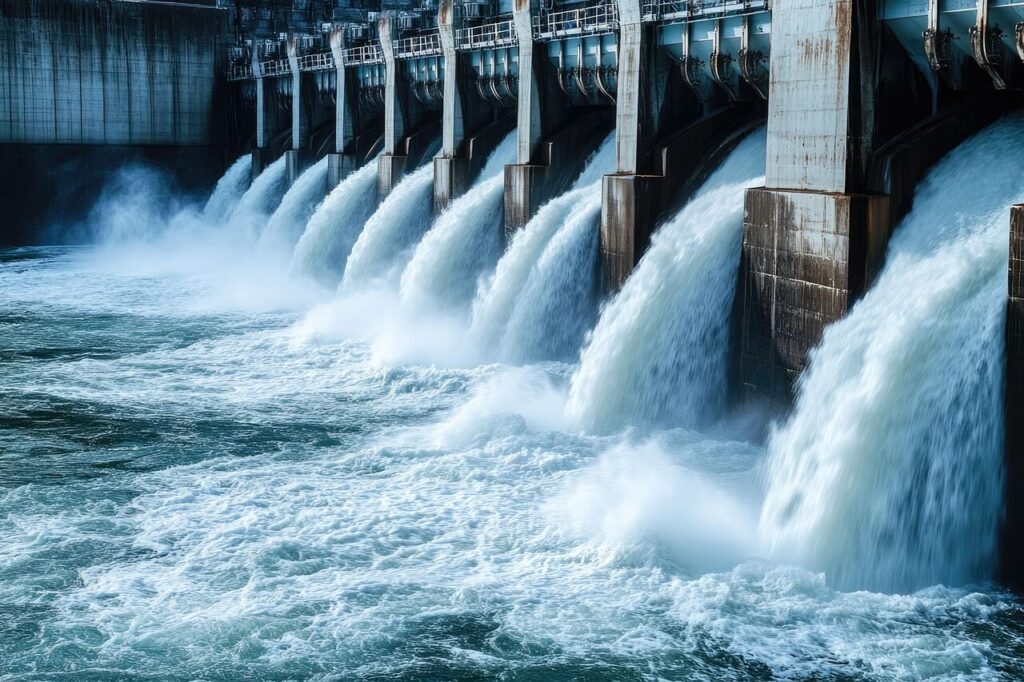
Hydroelectric Power: The much-touted, so-called ‘temples of modern India’ built at an enormous cost, with the Rihand dam figuring even on Rs.10 note for long, contributes only 9.9% (47.92 GW). Approximately 200 large hydropower plants (excluding small hydro projects, which are classified under renewables and contribute less than 5 GW total) make up the Nehruvian dream—never mind the ecological hazards.
Nuclear Power: as of April 2025, from 25 operational nuclear reactors across 8 nuclear power plants contribute only 1.83% (8.88 GW) of installed capacity. The figure of ~3% often touted by the uninitiated actually refers to electricity generation share due to higher plant load factors (e.g., 79.24% in 2021–22). However, 10 more reactors with a total capacity of 8,000 MW (8 GW) are under construction.
Solar Power: The installed capacity is 116.25 GW or about 24% including ground-mounted, rooftop, hybrid, off-grid, and PM KUSUM schemes. Major solar parks number in the dozens such as, Bhadla Solar Park, Pavagada Solar Park, but there are thousands of other solar installations including rooftop systems and distributed projects.
However, we must realize that “Installed capacity” is the maximum theoretical output the grid could accept from these sources, not what is actually generated in practice. For variable renewables like solar and wind, the real average output is lower due to weather/night. Solar’s “capacity factor” (the actual electricity delivered as a per cent of what nameplate capacity would produce if running at full power 24/7) is low, typically ~20% in India. So, while India has 116GW of solar installed, the actual electricity generated (output) is much less than that from the same capacity of hydro or nuclear. Solar power’s actual share of total electricity generated is lower (close to 8–10%, depending on season), since it doesn’t generate power at night or during cloudy periods. Moreover, there are serious issues of storing power as battery storage systems are extremely costly and not at all eco-friendly.
Wind Power: As of June 2025, India’s total installed wind power capacity is in the range of 50–51.5 GW. Major wind farms include Muppandal (Tamil Nadu, ~1,500 MW) and Kutch (Gujarat, ~1,100 MW). In India, wind farms typically operate at a capacity factor of only ~19–22%. Thus, wind power delivers only about 9.5 GW to the grid. Indian wind farms depend on monsoon and local wind patterns; outside the windy season, many turbines are idle or spinning slowly.
Wind and Solar’s low (and seasonal) capacity factor means it cannot replace coal/nuclear for round-the-clock reliability. That is one of the reasons that the GOI intends to buy more nuclear reactors from the USA, as noted in February 2025 agreements under the US-India 123 Civil Nuclear Agreement.
Other renewables (biomass, small hydro, waste-to-energy) produce little.
Why Windmills still need Diesel Gensets
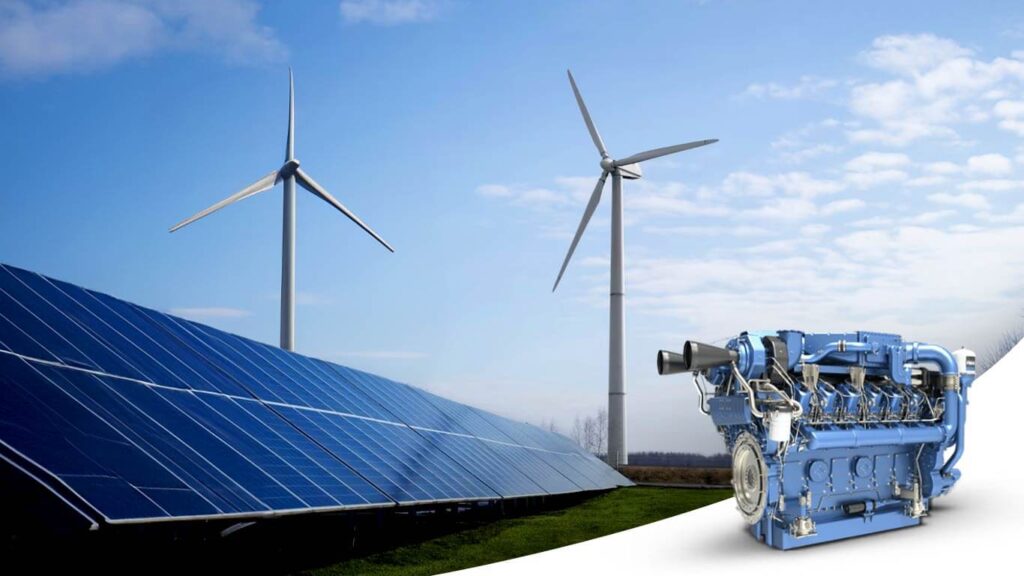
Here’s where the green energy hype takes a particularly absurd turn. Wind turbines, when idle due to low wind speeds, need diesel generators to keep them spinning. Why? To prevent mechanical issues like bearing damage or blade deformation. This isn’t a conspiracy theory—it’s a practical reality in some cases, though data on its prevalence in India is scarce. The irony is staggering: “clean” wind energy relying on dirty diesel to stay operational. Add to that the maintenance headaches—turbine blades wear out, gearboxes fail, and repairs in remote locations burn more fuel and resources. In India, given the remote locations of the wind farms, logistical challenges amplify these costs. Solar panels aren’t immune either; dust accumulation in arid regions like Rajasthan slashes efficiency, requiring constant cleaning that consumes water and energy in water-scarce areas.
Why Green Energy Can’t Meet India’s Hunger for Power
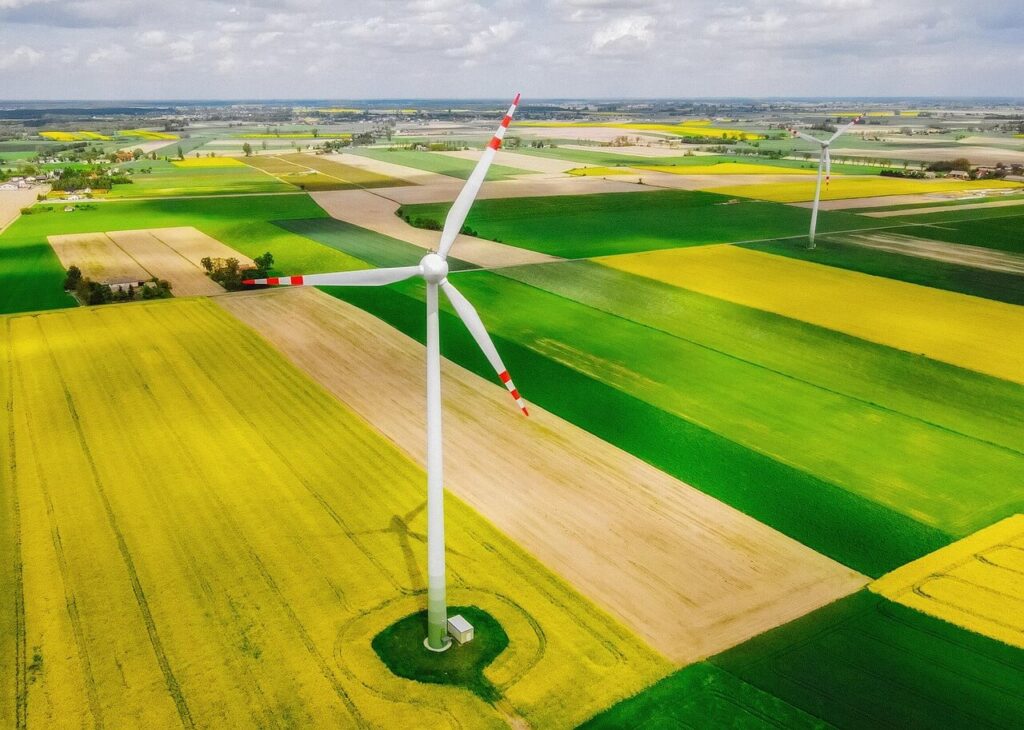
India’s energy demand is a beast that renewables can’t tame. In 2023–24, the country targeted 1,750 BU (billion units) of electricity generation, with thermal power (mostly coal) shouldering 1,324 BU—over 75%. Hydro chipped in 156.7 BU, nuclear 46.19 BU, and renewables (excluding large hydro) a measly 215 BU. Solar and wind, despite their shiny PR, contributed just 10% of electricity in 2024, while coal handled 64% of new demand growth. India’s grid needs base-load power—reliable, 24/7 electricity that doesn’t vanish when the sun sets or the wind slows. Solar and wind are intermittent, requiring expensive battery storage or fossil fuel backups to fill the gaps. Scaling battery storage for solar it to meet India’s needs would cost billions and rely on the same dirty mining processes that we have already exposed.
The numbers tell the story. India’s industrial sector, gobbling up 41.8% of electricity, and domestic sector (24.3%) demand constant power. Coal plants, with their 200+ facilities, deliver that stability. Hydro, with its ~200 large plants and 15 GW in the pipeline is a low-carbon workhorse but faces ecological pushback in the Himalayas. Nuclear, with only 25 reactors, is a niche player with ambitious plans but long lead times. Meanwhile, solar and wind, spread across thousands of installations, sound impressive but pale against thermal power. Even with India’s lofty goal of 500 GW of non-fossil fuel capacity by 2030, renewables (including large hydro) are projected to hit only 44% of generation by 2029–30, while thermal drops to 52%. Coal isn’t going anywhere—it’s the gritty reality keeping India’s lights on.
Green Energy still depends on Subsidies
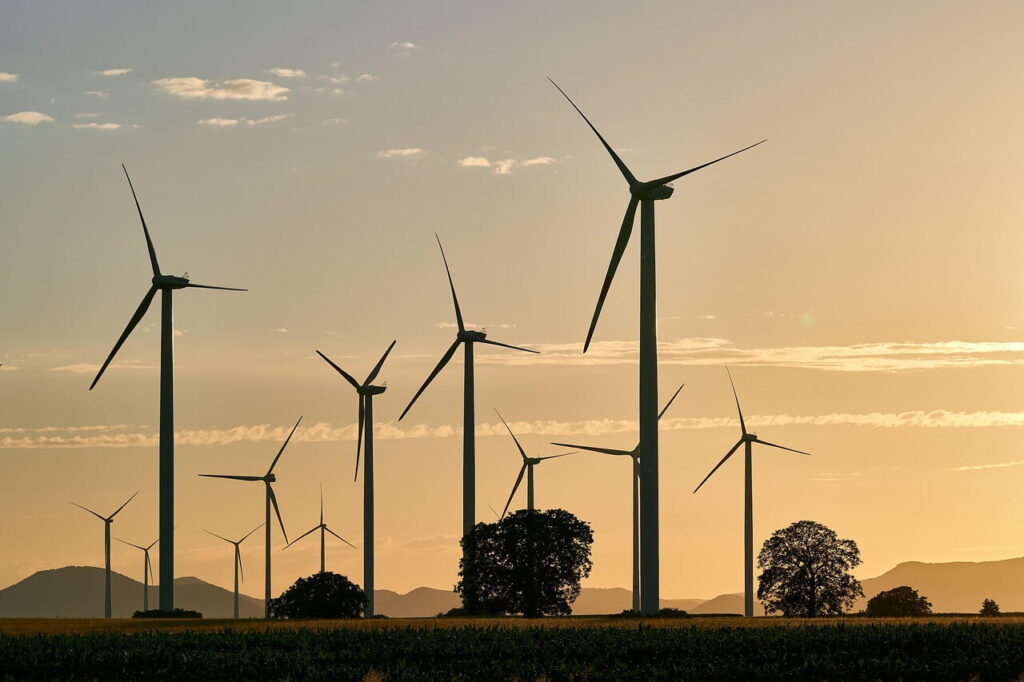
Green energy’s dirty little secret is its reliance on government subsidies. In India, the Union Budget 2025–26 threw Rs. 20,000 crore (US$2.3 billion) at nuclear and rooftop solar. Without these subsidies, wind and solar would collapse under the weight of their high upfront costs. Grand promises of green energy are great for conference halls, but on the ground, they’re a costly distraction.
A 10 MW solar plant costs ~Rs. 35–45 crore, reduced to ~Rs.17-20 crore with subsidies and tax breaks, while a 10 MW wind farm costs ~Rs.50–60 crore, reduced to ~Rs.25-30 crore. The subsidies place a significant burden on taxpayers (~Rs. 24,000 crore annually), with risks of inefficiency and favouritism. While not a “racket” in intent, poor targeting and transparency issues demand scrutiny. Reforms like phasing out commercial subsidies and improving grid infrastructure could be the first step.
Just to convince readers that I am not talking through my hat, I will give a typical break-up of the costs. Just remember that unless there is outright corruption or favouritism, or exploitation of the poor in land acquisition, the cost of land can be very high.
Solar Panels: Rs.18–22 crore; Inverters: Rs.4–6 crore; Mounting Structures: Rs.3.5–4.5 crore; Wiring/BoS: Rs.3.5–5 crore; Installation/Labour: Rs.2–4 crore; Grid Connectivity: Rs.2–5 crore ; Land (20–25 acres): Rs.1–2.5 crore Miscellaneous (Permits, Transport): Rs.2–3 crore.
Turbines (Nacelle, Blades, Hub): Rs.30–35 crore; Tower/Foundation: Rs.8–12 crore; Blade Transportation: Rs.2–3 crore; Installation/Erection: Rs.5–7 crore; Wiring/BoS: Rs.3–5 crore; Grid Connectivity: Rs.3–5 crore;Land (50–100 acres): Rs.2.5–5 crore; Miscellaneous (Permits, EPC): Rs.2–3 crore.
Subsidies are funded through public budgets, with MNRE’s 2024–25 allocation at ~Rs.24,000 crore for renewable schemes. This is drawn from taxpayer revenue (e.g., income tax, GST).

For a 10 MW solar plant, a ~40% subsidy (~Rs.14–18 crore) shifts costs to taxpayers. Scaled across ~105 GW of solar, subsidies could exceed Rs.1 lakh crore over years, a terrible burden.
Tax benefits like accelerated depreciation reduce government revenue, indirectly increasing the fiscal deficit (3.24% of GDP in 2024–25), which taxpayers bear through future taxes or inflation. Subsidies become a “racket” when poorly targeted (e.g., benefiting corporations via tax breaks).
Basically only those people take solar connections that are in a position to meet the initial expenditure of some lakhs of rupees. I am not in a position to spend that money and hence I am not getting a solar connection. In effect, subsidies go to affluent beneficiaries who should not be given that in the first. In any case, over-subsidization tends to favour large players who dominate contracts, side-lining smaller firms and reducing competition.
Just an Overhyped Alternative

Let’s call it what it is: renewables aren’t green—they’re alternative and that too a hyped one. They trade one set of environmental harms (fossil fuel emissions) for another (mining, land use, waste). The “green energy scam” isn’t about fraudsters pocketing cash; it’s about a narrative that paints wind and solar as planet-saving heroes while ignoring their dark side.
In India, where coal is king and hydro is a steady ally, renewables are a sideshow. The idea that they can scale fast enough to meet 817 GW by 2030 is laughable when coal still powers three-quarters of the grid.
The seminar circuit loves to tout India’s renewable rankings—4th in wind, 5th in solar, 3rd in wind-solar generation globally. But rankings don’t power homes. Coal does. Hydro does. Nuclear might, someday. Wind and solar? They’re photo-ops for policymakers, not solutions for a nation racing to keep up with its own growth. The green energy hype is a distraction, a feel-good story for a world that doesn’t exist. India’s energy future demands reality, not rainbows.
The Bottom Line

The fundamental objection is straightforward. You take a solar connection and it is subsidized. Your electricity bill is reduced and might even become zero for all I know. The subsidy does not come out of nowhere. Money does not grow on trees or come out of any supernatural phenomenon. It comes out of my taxes. Question is why should I pay for it? Just because, I am, for myriad reasons, not in a position to spend say Rs. 5-6 lakh to get the connection installed, there is no reason that I and all those who are not taking the solar connection should pay for it through the subsidy given to you.

